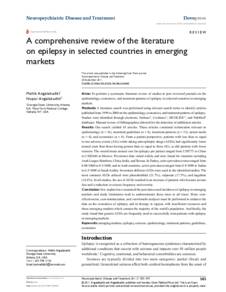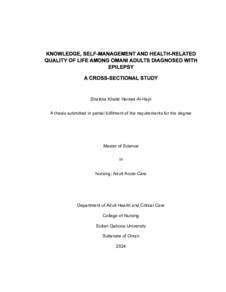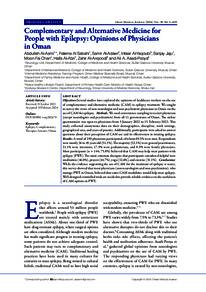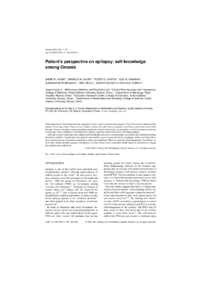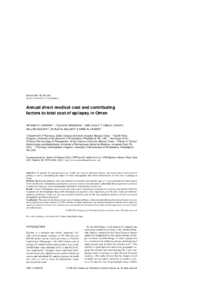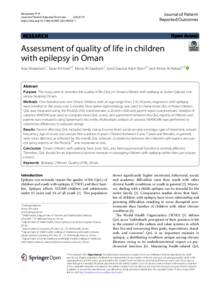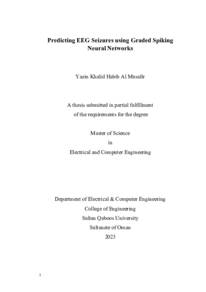Document
A Comprehensive review of the literature on epilepsy in selected countries in emerging markets.
Identifier
DOI: 10.2147/ndt.s24966
Contributors
Angalakuditi, Nupur., Author
Publisher
Dove Medical Press.
Gregorian
2011-09
Language
English
Subject
English abstract
Aims: To perform a systematic literature review of studies in peer reviewed journals on the epidemiology, economics, and treatment patterns of epilepsy in selected countries in emerging markets. Methods: A literature search was performed using relevant search terms to identify articles published from 1999 to 2000 on the epidemiology, economics, and treatment patterns of epilepsy. Studies were identified through electronic Embase®, Cochrane©, MEDLINE®, and PubMed® databases. Manual review of bibliographies allowed for the detection of additional articles. Results: Our search yielded 65 articles. These articles contained information relevant to epidemiology (n = 16), treatment guidelines (n = 4), treatment patterns (n = 33), unmet needs (n = 4), and economics (n = 8). From a patient perspective, patients with less than or equal to two adverse events (AEs) while taking anti-epileptic drugs (AEDs) had significantly lower annual costs than those having greater than or equal to three AEs, as did patients with fewer seizures. The overall mean annual cost for epilepsy per patient ranged from US$773 in China to US$2646 in Mexico. Prevalence data varied widely and were found for countries including Arab League Members, China, India, and Taiwan. In Turkey, active prevalence rates ranged from 0.08/1000 to 8.5/1000, and in Arab countries, active prevalence ranged from 0.9/1000 in Sudan to 6.5/1000 in Saudi Arabia. Seventeen different AEDs were used in the identified studies. The most common AEDs utilized were phenobarbital (21.7%), valproate (17.5%), and tiagabine (16.4%). In all studies, the use of AEDs resulted in an increase of patients who became seizure free and a reduction in seizure frequency and severity. Conclusion: Few studies have examined the prevalence and incidence of epilepsy in emerging markets and study limitations tend to underestimate these rates at all times. More cost effectiveness, cost-minimization, and cost-benefit analyses must be performed to enhance the data on the economics of epilepsy and its therapy in regions with insufficient resources and those emerging markets which contain the majority of the world's population. And finally, the study found that generic AEDs are frequently used to successfully treat patients with epilepsy in emerging markets.
Member of
ISSN
1176-6328
Resource URL
Category
Journal articles

